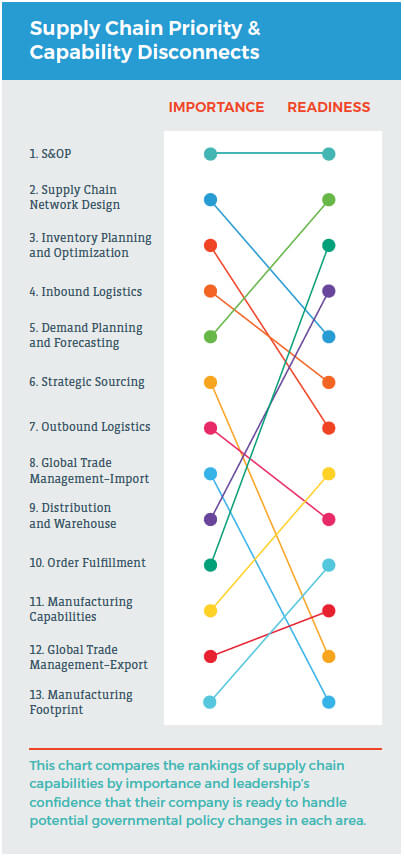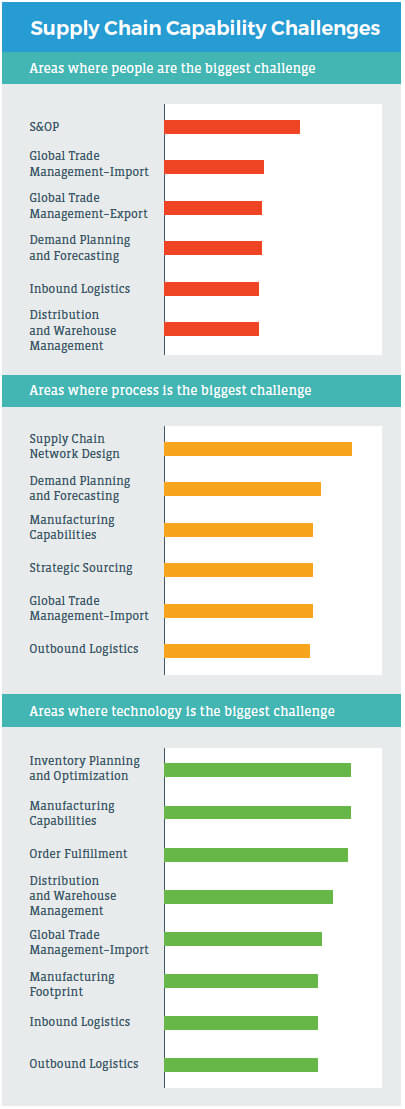Having the Right Supply Chain Capabilities Enables Manufacturers to Respond Quickly to Policy Changes
No matter how well a plan is executed, progress toward strategic and financial goals can be quickly undercut by economic and market trends beyond our control. In partnership with Aberdeen Group, we recently looked at how manufacturers are responding to the uncertainty around immigration, trade and other potential U.S. policy changes.
I previously wrote that manufacturing leaders expect any policy changes to have a positive financial impact on their businesses. Whatever happens – in Washington or elsewhere – supply chain capabilities need to be aligned with business priorities for companies to respond quickly and reap any financial gains.
The chart below compares the rankings of supply chain capabilities by importance against leaders’ confidence that each capability is where it needs to be. When considering specific capabilities, business leaders feel their S&OP processes are up to snuff. They are less confident about other high priority areas, including supply chain network design, inventory planning and optimization, inbound and outbound logistics, and global trade management.
Supply Chain Capabilities: Priorities vs. Readiness

People, Process or Technology: What’s Your Biggest Challenge?
To dig a little deeper into this issue, we asked manufacturers to rate the challenges (people, process or technology) for each of these supply chain capabilities (See bar chart below). Most of their supply chain capability challenges revolve around process issues. S&OP, where the biggest challenge is people, was the only exception. That’s understandable considering the cross-functional cooperation required to make S&OP work effectively.
Interestingly, there wasn’t much overlap. Some supply chain capabilities face mostly process challenges (supply chain network design and demand planning and forecasting) or technology challenges (inventory planning and manufacturing) or people challenges (S&OP and global trade management). Of course, people, process and technology all must be managed to some degree within each of these areas.
Whatever happens in Washington, in today’s ever-changing global economy manufacturers will always have to prepare for and respond to government policy changes. Doing that successfully requires robust supply chain capabilities. While we wait for any major changes to be enacted, it’s a good time to take a good hard look at your key supply chain capabilities, including your team’s skills, process rigor and technological capabilities, and identify any gaps that need to be closed.
Supply Chain Capability Challenges

New Supply Chain Readiness Research Report Now Available
Our new report highlights the findings of the 2017 Aberdeen Group Supply Chain Readiness Research Study underwritten by TBM Consulting Group. The purpose of this research was to investigate the potential impact of impending governmental trade policy, tax reform, and regulatory changes on manufacturing companies and to find out how prepared they are for whatever could happen. Download the benchmarking research report now.





